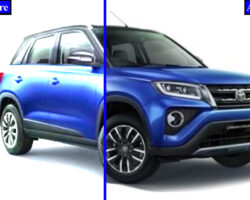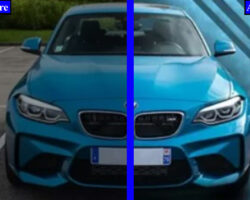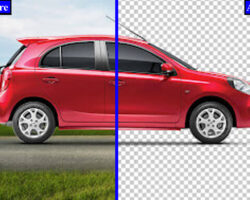We Provide Color Grading in Car Images is the process of enhancing and adjusting the colors, tones, and overall appearance of a car image to improve its visual appeal and convey a desired mood or style. We use various editing techniques and software, color grading can transform a car image from flat and dull to vibrant and eye-catching in a precise and controlled manner.
Our well-executed color grading technique can make a car image more visually appealing, highlight its features, and create a cohesive look and feel. Whether it’s adjusting the white balance, boosting colors, or toning down excessive saturation, color grading plays a crucial role in giving car images that desirable professional and polished look.
Color grading allows car photographers and marketers to evoke specific emotions, enhance branding, and ensure consistency across a series of car images. Understanding and employing effective color grading techniques can significantly elevate the visual impact and effectiveness of car images in automotive marketing and advertising.
Importance Of Color Grading In Car Image
Color grading plays a crucial role in enhancing the visual appeal of car images, which in turn impacts buyer perception, listing quality, and online engagement. The way a car is presented in images can significantly influence a potential buyer’s decision-making process, making color grading an essential aspect of car photography and marketing.
How It Influences The Buyer’s Perception
Color grading directly affects how potential buyers perceive a car. By adjusting the colors, saturation, and contrast, car images can be tailored to evoke emotions and create a specific visual identity. The choice of colors can elicit feelings of luxury, excitement, or reliability, further influencing a buyer’s perception of a vehicle.
A well-executed color grading process can transform an average car image into an eye-catching masterpiece, ultimately attracting and captivating potential buyers.
Impact On The Visual Quality Of Car Listings
The visual quality of car listings plays a crucial role in attracting potential buyers and generating leads. Color grading enhances the aesthetic appeal of car images by correcting lighting issues, adjusting white balance, and fine-tuning colors. This meticulous process ensures that every car photo stands out from the competition, making listings visually appealing and highly professional.
By presenting high-quality and visually pleasing images, color grading effectively convinces potential buyers that the cars being listed are of high value and worth considering.
Increases Engagement On Online Platforms
In the highly competitive world of buying and selling cars, standing out from the crowd is essential. Proper color grading can significantly increase engagement on online platforms by capturing viewers’ attention and encouraging them to engage with the listing.
Vibrant and visually appealing images are more likely to be shared, liked, and commented on, ultimately increasing the reach and visibility of car listings. This increased engagement not only boosts the chances of making a sale but also creates a strong brand presence for car dealers and sellers in the online marketplace.
Basics Of Color Grading Techniques That We Follow
Learn the basics of color grading techniques in car images to enhance their visual appeal. Discover how to manipulate colors, contrast, and saturation to create stunning and vibrant car photos. Master this skill and take your automotive photography to the next level.
What Is Color Grading?
Color grading is a crucial step in the post-production process of car images, where the overall color and tone of the image are enhanced to create a visually appealing and cohesive result. By adjusting various color parameters, such as brightness, contrast, saturation, and hue, color grading can transform a dull or flat image into a vibrant and dynamic one.
Color Grading Vs. Color Correction
While color grading and color correction are often used interchangeably, they serve distinct purposes in the realm of image editing. Color correction is aimed at correcting any color imbalances or inconsistencies in an image, ensuring that the colors appear accurate and natural.
On the other hand, color grading goes beyond simple corrections and involves artistic decisions to enhance the visual aesthetics of the image, giving it a specific mood or atmosphere.
Primary Tools For Color Grading
When it comes to color-grading car images, various tools are used to achieve the desired results. Let’s explore some of the primary tools commonly employed by professionals:
- Curves: Curves allow precise control over the brightness and contrast of different tonal ranges in an image. By manipulating the curve graph, you can adjust the highlights, midtones, and shadows to achieve the desired tonal balance.
- HSL (Hue, Saturation, and Luminance) sliders: The HSL sliders provide control over the individual color channels of an image. This tool allows you to adjust the hue, saturation, and luminance of specific colors, enabling you to fine-tune the overall color palette of the car image.
- Split-toning: Split-toning involves adding different colors to the highlights and shadows of an image separately. This technique can be used to create a specific mood or to enhance color contrast and visual interest. For example, adding a warm tone to the highlights and a cool tone to the shadows can create a cinematic effect.
- Color lookup tables (LUTs): LUTs are pre-defined color grading presets that can be applied to an image to achieve a specific look or style. These presets can mimic the characteristics of film stocks or create unique color treatments, providing a quick and efficient way to achieve consistent results.
These are just a few of the primary tools used in the color grading process for car images. By leveraging these tools effectively, you can elevate the visual appeal of your car photographs, making them stand out and leave a lasting impression.

Color Grading In Car Image Enhancement
Color grading plays a crucial role in enhancing car images and ensuring their visual appeal. Through careful manipulation of colors, car image enhancement professionals can achieve brand consistency, enhance specific features for online sales, and create successful car image presentations that attract potential buyers.
Achieving Brand Consistency
Brand consistency is essential for any car dealership or automotive manufacturer. It helps create a strong and recognizable brand identity, which in turn builds trust and loyalty among consumers. The use of color grading techniques in car image enhancement allows companies to maintain a consistent visual appearance across their digital platforms.
Through color grading, professionals can match the colors in car images to the brand’s established color palette. By doing so, they ensure that every image showcases the brand’s unique identity and style. This consistency helps reinforce the brand’s message and values, making it easier for customers to establish a connection and recognize the vehicles associated with the brand.
Enhancing Features For Online Sales
When it comes to online car sales, high-quality images that accurately represent the vehicles’ features are crucial. Color grading plays a pivotal role in enhancing these features, making them visually appealing to potential buyers. By adjusting saturation, brightness, and contrast, professionals can bring out the details of the car’s exterior and interior, making them more enticing to online shoppers.
Color grading can also be used strategically to highlight specific features of a car that make it stand out from the competition. For example, adjusting the color temperature to make the car’s paintwork appear richer or emphasizing the elegance of the interior can significantly impact a customer’s perception of the vehicle, driving them toward making a purchase.
Case Study: Successful Car Image Presentations
A case study exemplifying the power of color grading in car image presentations can shed light on the effectiveness of this technique. By examining a real-life example, we can understand how proper color grading enhances the visual appeal of car images and contributes to sales success.
| Case Study | Outcome |
|---|---|
| A luxury sedan with premium features | The car image was enhanced using color grading techniques to bring out the sleek lines and showcase the elegant interior. The resulting images attracted more attention from online shoppers and increased the number of inquiries and requests for test drives. |
| A sporty SUV with a vibrant personality | Color grading was employed to amplify the vibrant color of the SUV and accentuate its rugged features. As a result, the car images stood out in online listings, leading to increased clicks and ultimately, a higher rate of conversions. |
These case studies highlight the significant impact that color grading can have on influencing potential buyers and driving sales in the automotive industry.
Utilizing Software For Stunning Results
Color grading plays a crucial role in enhancing the visual appeal of car images. It allows you to manipulate the colors and tones to achieve a desired look or mood. While some car enthusiasts prefer outsourcing the color grading process to professionals, others have started embracing DIY techniques to add their personal touch.
Popular Color Grading Software For Car Images
When it comes to refining the colors in car images, several software programs have gained popularity among photographers and graphic designers. Adobe Photoshop is a go-to choice for many due to its extensive range of tools and functionalities. With its powerful adjustment layers and color grading options, Photoshop allows users to achieve precise and professional-looking results.
Similarly, Lightroom, another Adobe product, provides an intuitive interface specifically designed for photographers to apply color corrections and enhancements effortlessly. Its preset feature allows users to save their favorite styles and apply them to multiple car images with a single click.
If you prefer software dedicated solely to color grading, Davinci Resolve is a popular choice. Widely used in the film industry, Davinci Resolve offers advanced color grading tools and features that give professionals extensive control over the image’s color accuracy and overall look.
It allows for precise adjustments to the color balance, saturation, shadows, and highlights, resulting in stunning car images that leave a lasting impression.
Diy Color Grading Tips For Amateurs
If you are an amateur looking to enhance your car images through color grading, there are several key tips you can follow to achieve professional-looking results:
- Start with a high-quality image: Ensure the image is well-exposed and in focus before diving into color adjustments.
- Study color theory: Familiarize yourself with the basics of color theory to understand how different colors interact and evoke specific emotions. Experiment with various color combinations to create unique looks.
- Take advantage of presets: Many editing software, such as Lightroom, provide pre-made presets that serve as a great starting point for your color grading. Customize these presets to match your desired aesthetic.
- Use selective adjustments: Instead of applying global adjustments to the entire image, experiment with targeted adjustments using brushes or masks to selectively enhance specific areas, such as the car’s body or interior.
- Don’t overdo it: While it’s tempting to go all out with vibrant and bold colors, exercise restraint in your color grading. Subtle adjustments often yield more sophisticated and visually appealing results.
Professional Services Vs. Self-editing
When it comes to color grading car images, there’s a debate between opting for professional services or doing it yourself. Both approaches have their pros and cons:
| Professional Services | Self-Editing |
|---|---|
|
|
Ultimately, the decision between professional services and self-editing boils down to your personal preferences, available resources, and desired outcome. Whichever path you choose, proper color grading will undoubtedly elevate the visual impact of your car images.
Maintaining Authenticity Post-grading
Maintaining authenticity in post-grading car images involves careful color grading techniques to create a visually stunning yet realistic final result. Enhancing the colors, contrast, and sharpness while preserving the original appearance ensures an accurate representation of the vehicle.
Balance Between Enhancement And Realism
When it comes to color grading car images, one of the most important considerations is finding a balance between enhancement and realism. While enhancing the colors and tones can make a car image more visually appealing, it is crucial to maintain the authenticity of the vehicle.
After all, potential buyers want to see a car as it truly appears in real life, not as an overly saturated or heavily edited image.
By skillfully adjusting the colors and tones in a car image, it is possible to bring out the best features of the vehicle without compromising its authenticity.
This balance can be achieved by identifying the key elements that need enhancement, such as the shine of the paint, the clarity of details, or the depth of shadows, while also ensuring that the overall image represents the true colors and proportions of the car.
Legal Considerations In Automotive Advertising
In the world of automotive advertising, there are legal considerations that must be taken into account when color-grading car images. Broadcasting false or misleading visuals can lead to legal repercussions and damage the reputation of both the advertiser and the car manufacturer.
Advertisements that exaggerate the appearance of a car through excessive color grading or alterations can be considered deceptive and can mislead potential buyers. Law and regulations require that any enhancements made to the car image must accurately represent the product being advertised. This includes maintaining the authenticity of the colors, shapes, and proportions of the car.
Ethical Practices In Color Grading, Ensuring Authenticity And Honesty
When color grading car images, it is not only important to adhere to legal requirements but also to follow ethical practices. Ethical color grading ensures that the car is represented honestly and transparently to potential buyers. It involves maintaining the authenticity of the vehicle while enhancing its visual appeal.
By employing ethical practices, car images can be adjusted to showcase the car’s features and highlights without distorting its appearance beyond recognition.
It is about enhancing what already exists rather than creating something entirely new. Ethical color grading prioritizes honesty and transparency, delivering images that accurately represent the car in the best possible light.
Challenges In Automotive Color Grading
Color grading in car images presents unique challenges in the automotive industry. Achieving the perfect color balance, contrast, and saturation is essential for visually appealing car photos that accurately represent the vehicle.
Meeting these challenges requires expertise in color grading techniques and an understanding of the specific requirements for automotive photography.
Color grading plays a crucial role in the automotive industry, enabling car manufacturers and sellers to showcase their vehicles in the best possible light. However, this process comes with its fair share of challenges that require careful attention and expertise.
Properly addressing these challenges is essential to achieve accurate and consistent color representation across various devices and overcome environmental lighting issues. In this article, we will discuss two of the most common challenges faced in automotive color grading: common pitfalls and how to avoid them, and maintaining color accuracy across devices.
We will also explore practical techniques to overcome environmental lighting issues and ensure that each of these critical aspects is addressed effectively.
Common Pitfalls And How To Avoid Them
When it comes to automotive color grading, several common pitfalls can lead to inaccurate color representation and compromised results. Being aware of these pitfalls and knowing how to avoid them is crucial to achieving the desired outcome. Here are some important factors to consider:
- Monitor Calibration: Incorrect monitor calibration is one of the primary causes of color discrepancies. It is essential to calibrate your monitor regularly to ensure accurate and consistent color reproduction. Utilize a hardware calibration device and follow the manufacturer’s instructions for optimal results.
- Color Spaces: Choosing the right color space is vital to accurately represent colors. Use a wide-gamut color space like Adobe RGB when editing and exporting images for print or online use. This ensures a broader range of colors is captured and displayed accurately.
- White Balance: Improper white balance can lead to color cast issues. Always use custom white balance settings or adjust it manually during the photo shoot to ensure colors are captured as accurately as possible.
- Over-Editing: It’s easy to get carried away with editing, leading to oversaturated or unrealistic colors. Maintain a balance between enhancing the car’s appearance and preserving its natural color scheme.
By being mindful of these common pitfalls and implementing the appropriate techniques, you can avoid potential color grading errors and ensure accurate and visually stunning final results.
Maintaining Color Accuracy Across Devices
In the digital era, it is crucial to maintain color accuracy across various devices. With users accessing car images through desktops, laptops, smartphones, and tablets, it is essential that colors remain consistent across different screens. Here are some best practices to consider:
- Color Management: Implement color management techniques to ensure consistent color reproduction across different devices. Embed an appropriate color profile (e.g., sRGB) while exporting images to maintain color consistency.
- Color Calibration: Regularly calibrate your devices, including monitors, smartphones, and tablets, to ensure consistent color accuracy across the board. Use calibration software or hardware devices specifically designed for this purpose.
- Test on Multiple Devices: Always test your car images on various devices to verify color accuracy and make necessary adjustments if needed. This reduces the risk of color variations that can occur due to differences in screen technology and color settings.
- Utilize Color Checkers: Color checkers are invaluable tools that help ensure color accuracy during the photoshoot. By including a color chart in your car images, you have a reference point to compare and adjust colors during the post-processing stage.
By implementing these practices, you can significantly enhance the consistency and accuracy of colors across various devices and provide an optimal visual experience to your audience.
Overcoming Environmental Lighting Issues
Environmental lighting conditions can pose challenges in achieving desired color grading results. Here are some techniques to overcome common lighting issues:
- Utilize Neutral Gray Cards: Neutral gray cards help establish proper white balance under different lighting conditions. Include a gray card in the scene during the photoshoot and use it as a reference for post-processing adjustments.
- Avoid Mixed Lighting: Mixed lighting, where different light sources with varying color temperatures are present, can result in color imbalances. Try to shoot under consistent lighting conditions or use gels to balance light sources during the photoshoot.
- Post-Processing Techniques: Advanced post-processing techniques, such as selective color adjustments and gradient filters, can be used to correct lighting issues and ensure accurate color representation.
By implementing these techniques, you can effectively tackle environmental lighting challenges and achieve consistent and accurate color grading results for your car images.
Frequently Asked Questions (FAQs)
What Is Color Grading In Car Image?
Color grading in car images is the process of enhancing or altering the color and tone of a car photo to enhance its visual appeal.
Why Is Color Grading Important In Car Photography?
Color grading is important in car photography as it helps to create a specific mood, enhance details, and make the car look more appealing to potential buyers.
How Does Color Grading Affect Car Images?
Color grading affects car images by adjusting the color temperature, contrast, saturation, and other parameters to create a desired look and feel for the image.
What Software Is Commonly Used For Color Grading Car Images?
Popular software used for color grading car images include Adobe Lightroom, Adobe Photoshop, Capture One, and DaVinci Resolve.
Is Color Grading A Complicated Process?
Color grading can be initially daunting, but with practice and guidance, it becomes easier to master the process and achieve the desired results.
Can Color Grading Help To Fix Lighting Issues In Car Images?
Yes, color grading can help to correct lighting issues such as underexposure or overexposure, balancing the overall tones in the image.
Are There Any Specific Color Presets For Car Photography?
Yes, there are various color presets available online that are specifically designed for car photography, which can be applied during color grading to achieve a desired look.
What Are Some Common Color Grading Techniques For Car Images?
Common color grading techniques for car images include adjusting the white balance, enhancing shadows and highlights, applying selective color adjustments, and fine-tuning the overall color toning.
Can Color Grading Be Applied To Both Interior And Exterior Car Images?
Yes, color grading can be applied to both interior and exterior car images to enhance the colors, improve the overall look, and create a consistent visual style.
How Does Color Grading Impact The Perception Of Car Brands?
Color grading can play a crucial role in creating a consistent visual identity for car brands, evoking specific emotions and associations with their products through color manipulation.
Conclusion
Color grading in car images is an essential aspect of professional automotive photography. By enhancing colors and tones, it allows vehicles to appear more vibrant and visually appealing.
With the right techniques and tools, car photographers can create stunning images that captivate viewers and effectively showcase the beauty of the automobile.
Whether it’s adjusting exposure, contrast, or saturation, mastering color grading can take your car photography to the next level, leaving a lasting impression on your audience.
So, don’t underestimate the power of color grading in car images. Start exploring this technique and elevate your automotive photographs like never before.






